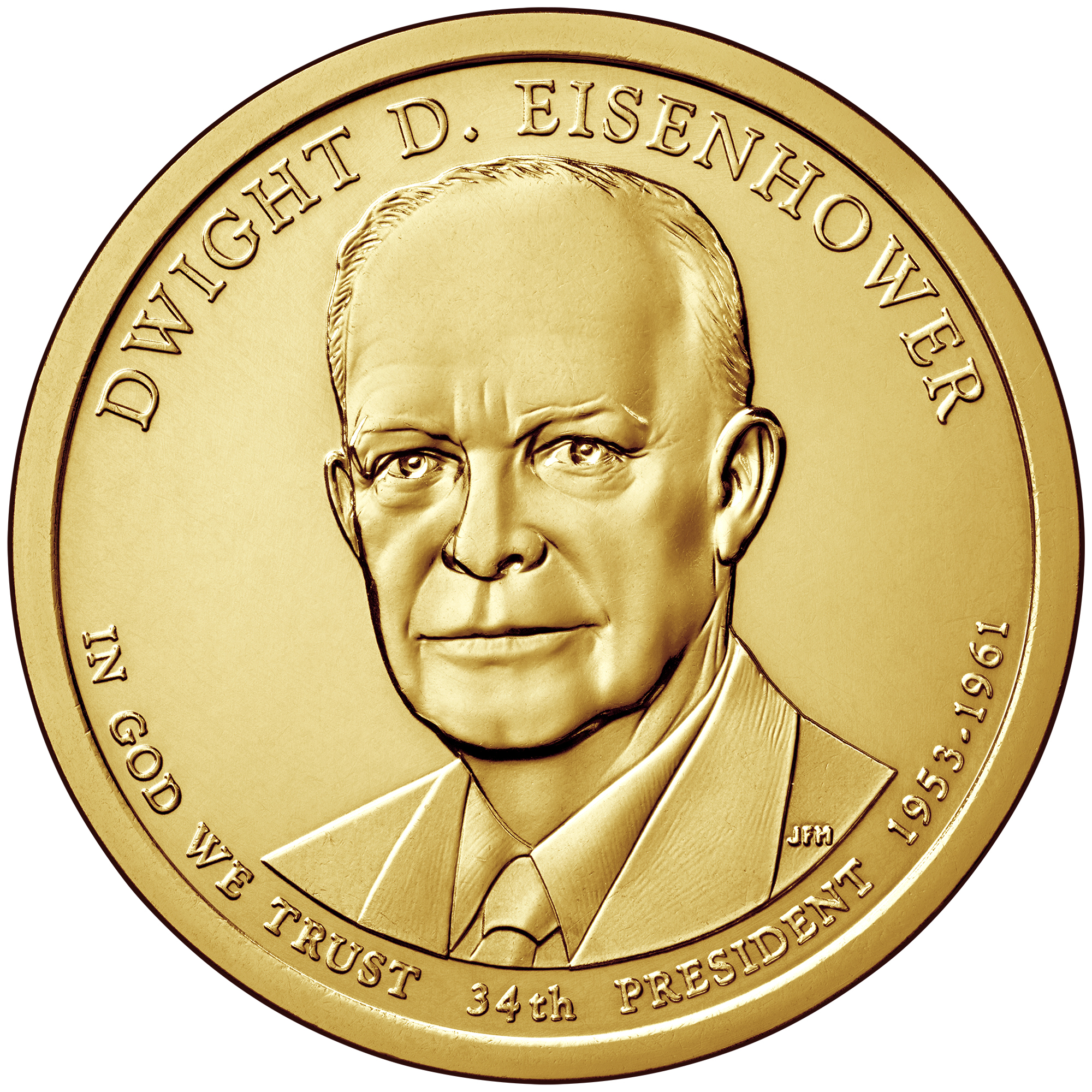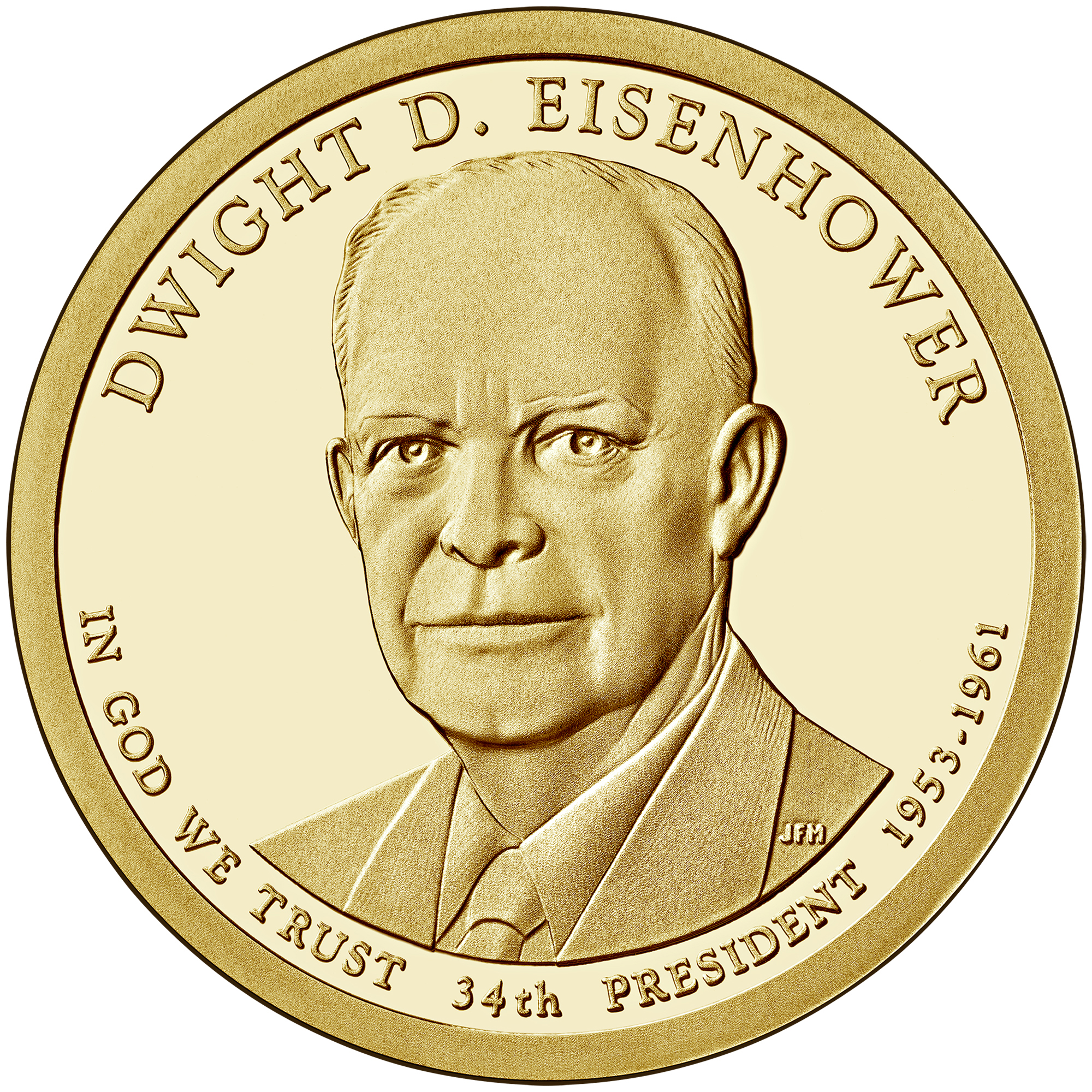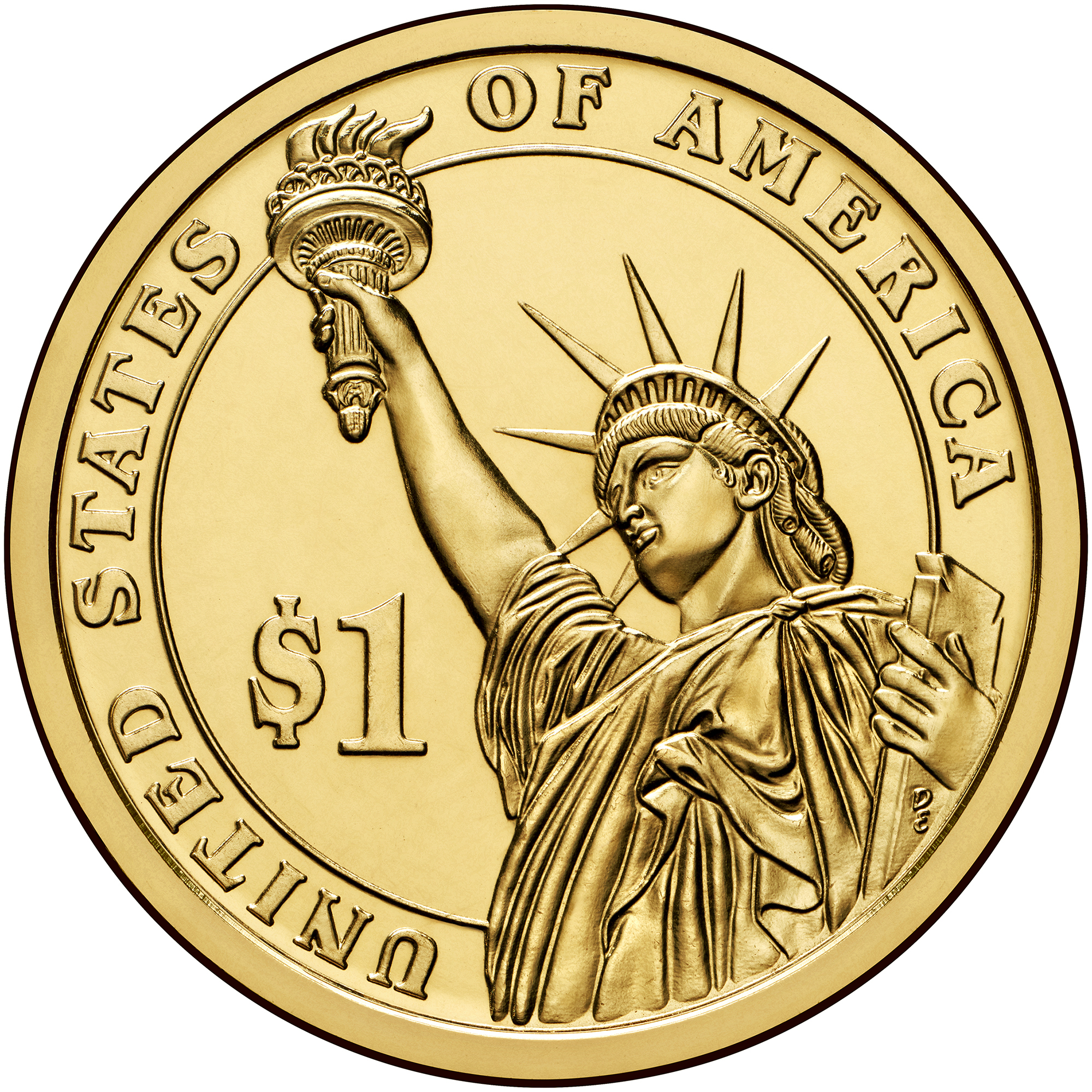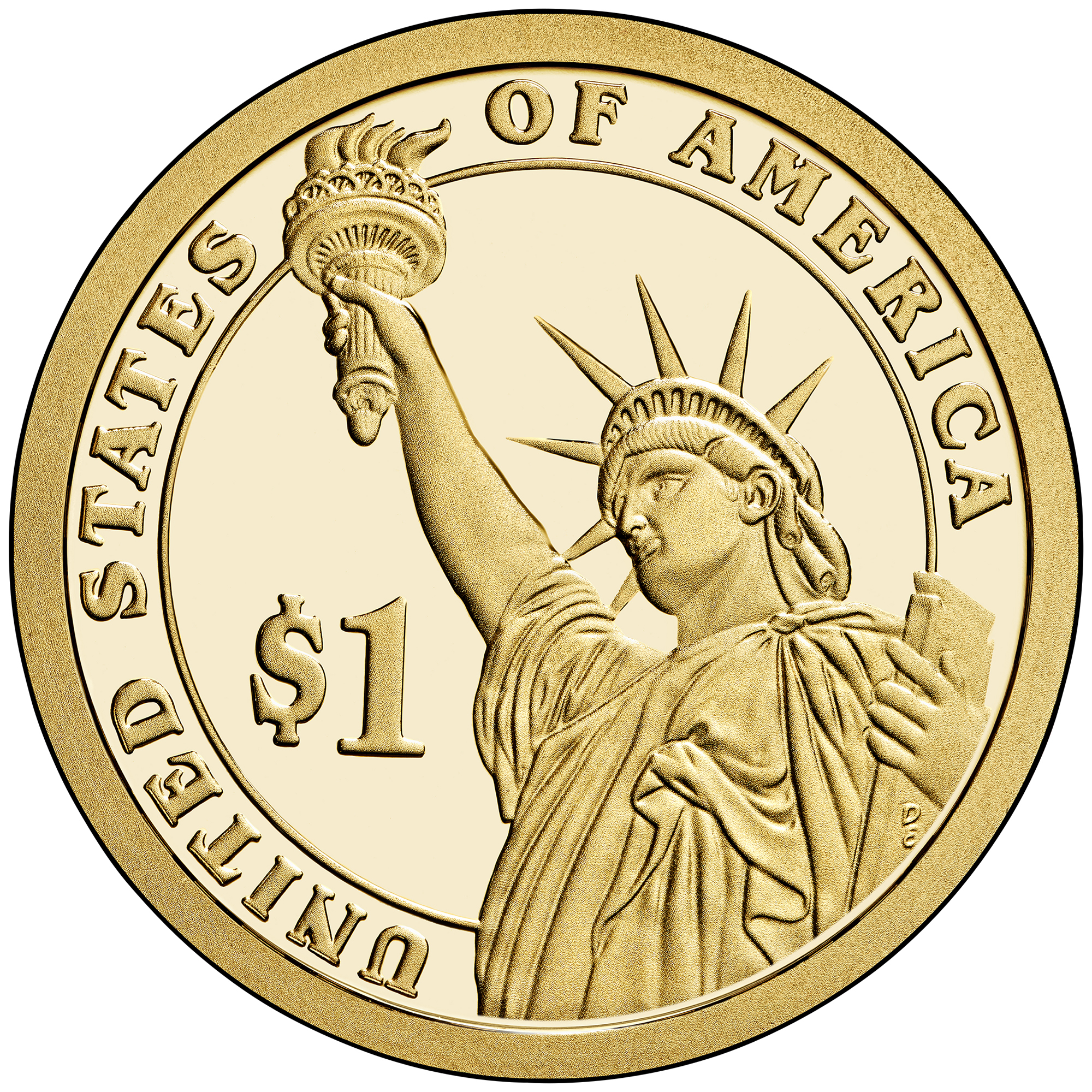Dwight D. Eisenhower Presidential $1 Coin
- Year of Issue: 2015
- Authorizing Legislation: Public Law 109–145
Background
Dwight David “Ike” Eisenhower was born October 14, 1890, in Denison, Texas. After graduating from the U.S. Military Academy at West Point in 1915, he carved out a distinguished military career that included commanding the Allied Forces that landed in North Africa, serving as supreme commander of the troops invading France on D-Day, and serving as the first supreme commander of North Atlantic Treaty Organization forces. For a brief period, he also was president of Columbia University.
Once Eisenhower retired from active service, he announced his candidacy for president. He won an impressive victory and took the oath of office on January 20, 1953. The next day he wrote: “My first day at the President’s Desk. Plenty of worries and difficult problems. But such has been my portion for a long time – the result is that this just seems (today) like a continuation of all I’ve been doing since July ’41 – even before that!”
Eisenhower went on to serve two terms in office. Highlights of his presidency include:
- Negotiating an armistice in the Korean War.
- Participating in the Geneva Conference on Indochina, which resulted in the portioning of Vietnam.
- Launching the first atomic submarine, the U.S.S. Nautilus.
- Establishing the President’s Council on Youth Fitness, the precursor of the President’s Council on Physical Fitness and Sports.
- Establishing the Department of Health, Education and Welfare.
- Signing legislation creating the Interstate Highway program.
- Sending federal troops to enforce the court-ordered integration of Little Rock Central High School.
- Signing the 1957 Civil Rights Act, the first civil rights legislation since Reconstruction.
- Signing legislation in 1958 creating the National Aeronautics and Space Administration.
- Signing legislation admitting Alaska and Hawaii into the Union as the 49th and 50th states, respectively.
Coinage legislation enacted during presidency:
- Act of July 11, 1955 – Provided that all United States currency shall bear the inscription “In God We Trust.”
- Joint Resolution of July 30, 1956 – Declared “In God We Trust” the national motto of the United States.
- Act of June 30, 1954 – Amended Section 3528 of the Revised Statutes, relating to the metal fund for the purchase of metal for minor coins, and doubles the amount that can be spent by the Bureau of the Mint from $1,000,000 to $2,000,000.
- Act of July 9, 1956 – Increased the amount for the purchase of metal for minor coinage to $3,000,000 and amended Section 3526 of the Revised Statutes to authorize use of the bullion fund for silver coinage to also cover the cost of the alloy metal.
- Treasury Order 179 dated November 19, 1953 – Transferred coin distribution from the Treasurer of the United States to the Bureau of the Mint. The Mint would now transfer current and uncurrent coins among the Mints, the Federal Reserve Banks and branches, and the Treasurer of the United States.
United States Mint Directors Appointed:
William H. Brett of Ohio – July 1954 – January 1961
Characteristics
Obverse Inscriptions
- DWIGHT D. EISENHOWER
- 34TH PRESIDENT 1953-1961
- IN GOD WE TRUST
Reverse Inscriptions
- UNITED STATES OF AMERICA
- $1
Incused (edge) Inscriptions
- 2015
- E PLURIBUS UNUM
- mint mark ("P", "D," or "S")
Mint and Mint Mark
Artist Information
Obverse- Joseph Menna, Medallic Artist
- Don Everhart, Sculptor-Engraver






